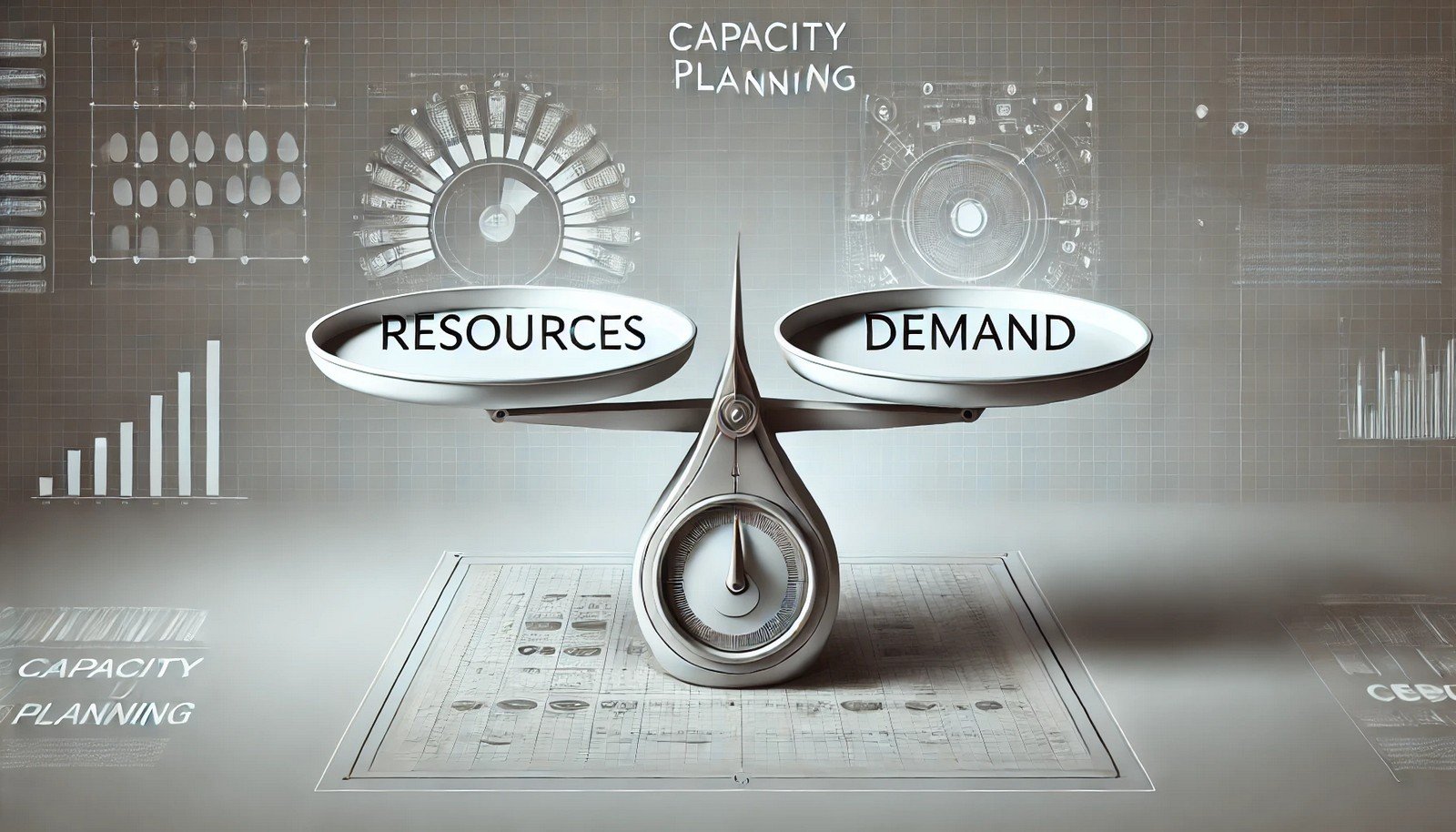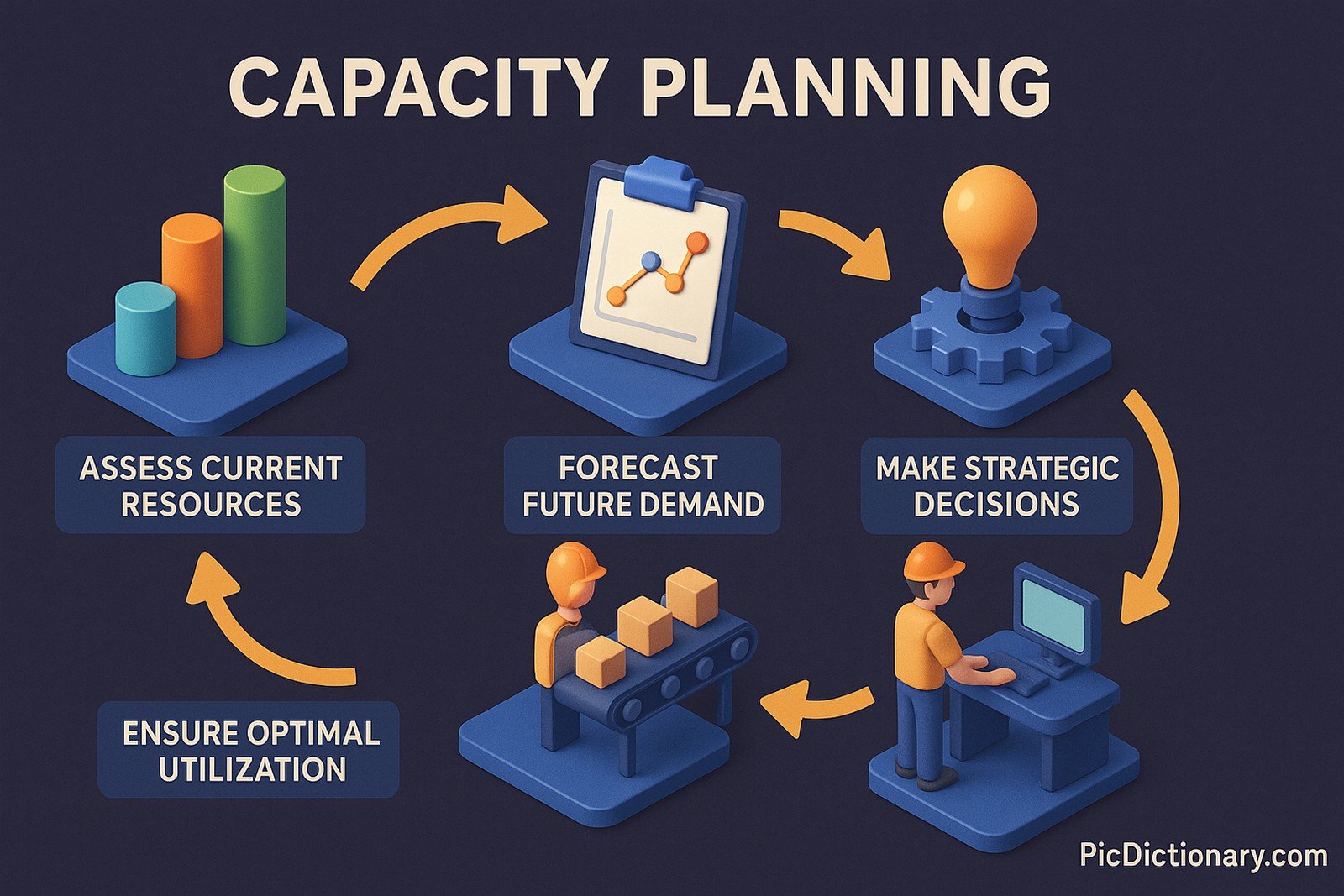Capacity Planning
 (Representational Image | Source: Dall-E)
(Representational Image | Source: Dall-E)
Quick Navigation:
- Capacity Planning Definition
- Capacity Planning Explained Easy
- Capacity Planning Origin
- Capacity Planning Etymology
- Capacity Planning Usage Trends
- Capacity Planning Usage
- Capacity Planning Examples in Context
- Capacity Planning FAQ
- Capacity Planning Related Words
Capacity Planning Definition
Capacity planning is the process of determining the production capacity needed by an organization to meet changing demands for its products or services. It involves assessing current resources, forecasting future demand, and making strategic decisions to ensure optimal utilization of infrastructure, workforce, and technology.
Capacity Planning Explained Easy
Imagine you have a lemonade stand, and you know that on a hot day, more people will want lemonade. If you don’t have enough lemons or cups, you might not be able to serve everyone. But if you prepare too much and it’s a rainy day, you’ll waste ingredients. Capacity planning is like making sure you have just the right amount of lemons and cups.
Capacity Planning Origin
Capacity planning has been a crucial aspect of manufacturing and service industries since the early industrial revolution. As businesses scaled operations, they needed better forecasting techniques to match production with demand.
Capacity Planning Etymology
The term "capacity planning" derives from "capacity," meaning the maximum amount something can contain or produce, and "planning," which refers to organizing for future needs.
Capacity Planning Usage Trends
Over time, capacity planning has become more data-driven, integrating AI and predictive analytics. Businesses increasingly use cloud computing and automation to adjust capacity dynamically.
Capacity Planning Usage
- Formal/Technical Tagging:
- Resource Management
- Operations Planning
- IT Infrastructure Management - Typical Collocations:
- "capacity planning strategy"
- "scalable capacity planning"
- "IT capacity planning process"
Capacity Planning Examples in Context
- A manufacturing company uses capacity planning to ensure machinery can handle peak production seasons.
- Cloud service providers implement capacity planning to balance server loads.
- Airlines optimize seating availability and scheduling based on seasonal demand.
Capacity Planning FAQ
- What is capacity planning?
Capacity planning is the process of determining how much production or service capacity is required to meet future demands efficiently. - Why is capacity planning important?
It ensures businesses can handle demand without overloading resources or wasting investments. - What industries use capacity planning?
Manufacturing, IT, healthcare, logistics, and hospitality rely on capacity planning. - How does IT capacity planning work?
It involves assessing computing resources, forecasting user demands, and optimizing cloud or on-premise infrastructure. - What are the types of capacity planning?
Common types include workforce, production, and IT capacity planning. - What tools are used for capacity planning?
ERP software, cloud computing tools, and predictive analytics platforms. - How does capacity planning impact customer satisfaction?
Ensures timely service and product availability. - Can capacity planning prevent system failures?
Yes, it helps prevent overloads that could lead to system downtime. - How is capacity planning different from demand forecasting?
Demand forecasting predicts needs, while capacity planning determines how to meet them. - What are common challenges in capacity planning?
Challenges include inaccurate demand predictions and resource constraints.

Capacity Planning Related Words
- Categories/Topics:
- Business Operations
- IT Resource Management
- Supply Chain Optimization
Did you know?
In 2018, a global airline faced a major disruption due to poor capacity planning, leading to thousands of canceled flights. The incident highlighted the importance of real-time demand forecasting and flexible capacity adjustment to prevent service failures.
PicDictionary.com is an online dictionary in pictures. If you have questions or suggestions, please reach out to us on WhatsApp or Twitter.Authors | Arjun Vishnu | @ArjunAndVishnu

I am Vishnu. I like AI, Linux, Single Board Computers, and Cloud Computing. I create the web & video content, and I also write for popular websites.
My younger brother, Arjun handles image & video editing. Together, we run a YouTube Channel that's focused on reviewing gadgets and explaining technology.



Comments powered by CComment